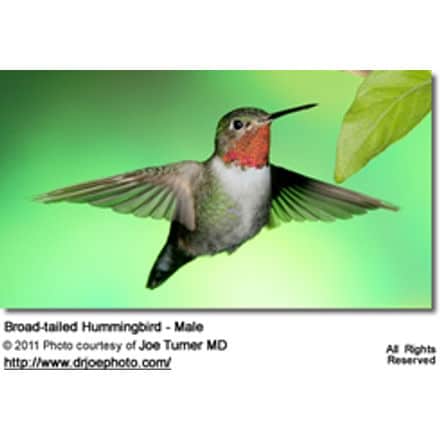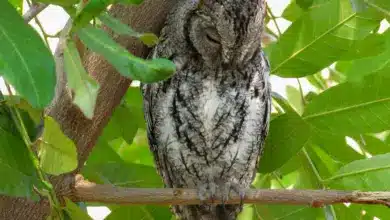Central America Hummingbirds
Hummingbirds found in the USA (by U.S. State) … Canada … Mexico … Puerto Rico … Jamaica … Honduras
Central America Hummingbirds
Long-tailed Hermits (Phaethornis superciliosis) – Also found in Mexico and South America
Little Hermits (Phaethornis longuemareus) – Also found in Mexico and South America
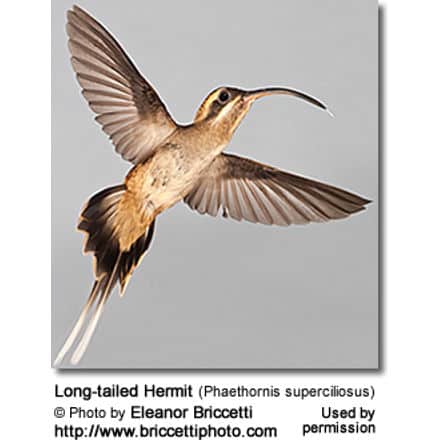

Wedge-tailed Sabrewings (Campylopterus curvipennis) – Also found in Central America
Violet Sabrewings (Campylopterus hemileucurus) – Also found in Central America
White-necked Jacobins (Florisuga mellivora) – Also found in South America

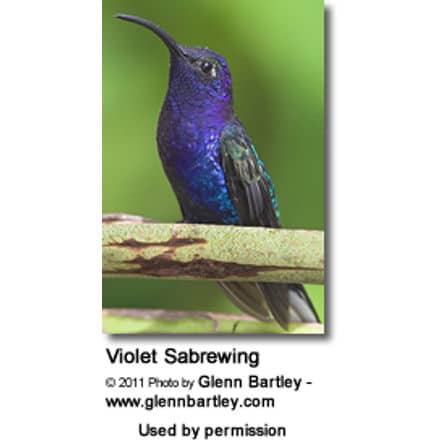
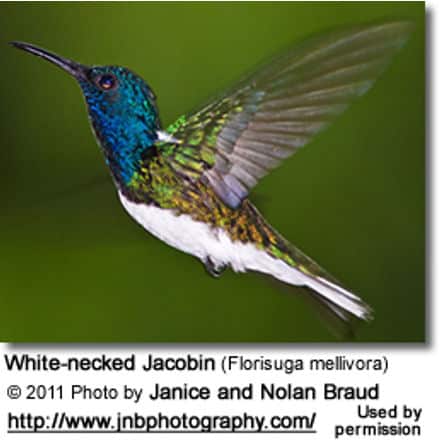
Green Violetear Hummingbirds (Colibri thalassinus) – Also found in Mexico and South America
Green-breasted Mango (Anthracothorax prevostii) – Also found in Mexico
Emerald-chinned Hummingbird (Abeillia abeillei) – Also found in Mexico
Canivet’s or Fork-tailed Emerald, Chlorostilbon canivetii
Salvin’s Emerald, Chlorostilbon (mellisugus/canivetii) salvini – Similar to Canivet’s Emerald, except the inner tail feathers are tipped dark sooty grey and narrower, or grey tips entirely missing.
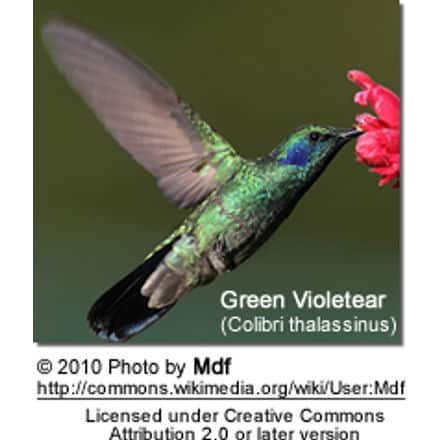
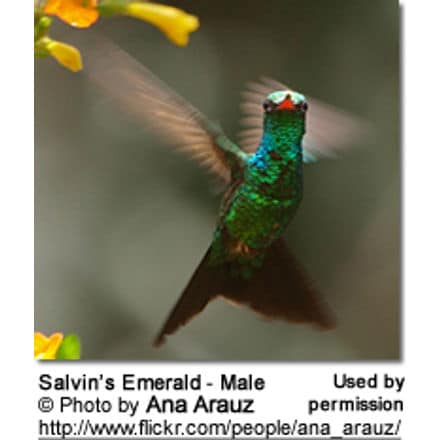

Hummingbird Resources
- Hummingbird Information
- Hummingbird Amazing Facts
- Attracting Hummingbirds to Your Garden
- Hummingbird Species
- Feeding Hummingbirds
Rufous-crested Coquettes (Lophornis delattrei) – Also found in South America
Black-crested Coquettes (Lophornis helenae) – Also found in Central America

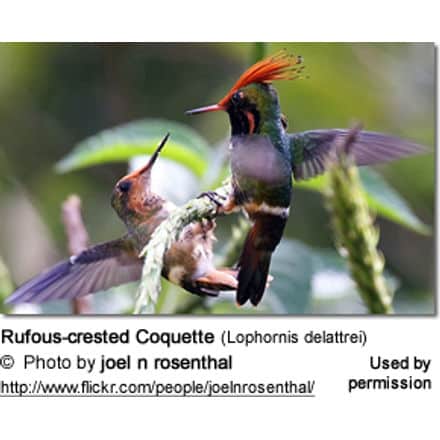
Mexican or Crowned Woodnymphs (Thalurania ridgwayi) – Also found in South America
White-eared Hummingbirds (Basilinna leucotis) – Also found in U.S. (Arizona) and Mexico
ID: Both the male and female White-eared Hummingbird have a prominent white ear stripe (more boldly colored in the male) for which this species was named.
Blue-throated Sapphire or Blue-Throated Goldentail, Hylocharis eliciae – Also found in Mexico
White-bellied Emerald (Amazilia candida) – Also found in Mexico
Azure-crowned Hummingbird, Amazilia cyanocephala – This dominant hummingbird species is usually found in highland areas with pine or oak forests, humid broadleaf forest and the La Mosquitia pine savanna.
(Amazilia beryllina) – Also found in Arizona, New Mexico and Texas, USA.
ID: They have shimmering green feathers from their bill to their rump, where the color changes to rufous and extends through their tail feathers.
The tail feathers have a shiny, iridescent purple tint that blends with the rufous color.
Males and females look alike.
(Amazilia rutila) – Also found in the United States and Mexico
This medium-sized hummingbird is bronze green above and cinnamon-colored below. The square tail is reddish with gold and green edging. The long, slim bill has a black tip.
Buff-bellied Hummingbird (Amazilia yucatanensis) – In Central America only found in Belize. Also occur in Mexico and in the U.S. (Texas)
Rufous-tailed Hummingbird (Amazilia tzacatl) – Also found in Mexico and South America
Stripe-tailed Hummingbird (Eupherusa eximia) – Also found in Mexico
Amethyst-throated Hummingbird (Lampornis amethystinus) – Also found in Mexico
Garnet-throated Hummingbird (Lamprolaima rhami) – Also found in Mexico

(Heliomaster constantii) – Also found in Mexico. Occasionally visit the United States at the end of the breeding season – mostly in late summer and early fall.
Key ID: Larger in size than most other hummingbirds in the area with a very long bill.
Males and females have a dark, mostly metallic bronze upper plumage (crown, back and tail) with a white patch on the back and rump (lower back – above tail). The plumage below is greyish white. They have a dark eye-stripe with a white stripe above and below.
The male has a metallic violet-red gorget (throat patch) that can look dull blackish in poor light conditions.
The female’s plumage is slightly less colorful and she lacks the throat patch of the male.
Long-billed Starthroat (Heliomaster longirostris) – Also found in Mexico and South America
Sparkling-tailed Hummingbird (Tilmatura dupontii) – Also found in Mexico
Blue-throated Sapphire or Blue-Throated Goldentail, Hylocharis eliciae
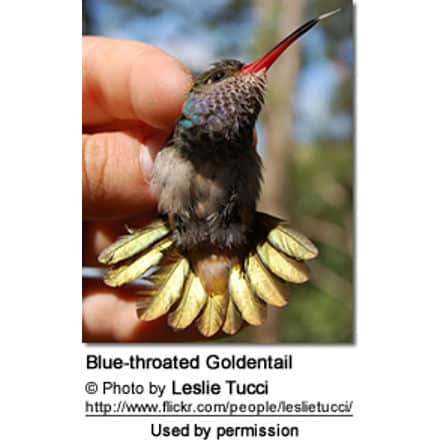
Ruby-throated Hummingbirds (Archilochus colubris) – Eastern U.S. and southern Canada, winters in Mexico and Central America
The male has a ruby-red throat, a white collar, an emerald green back and a forked tail.
The female has a green back and tail feathers that are banded white, black and grey-green.
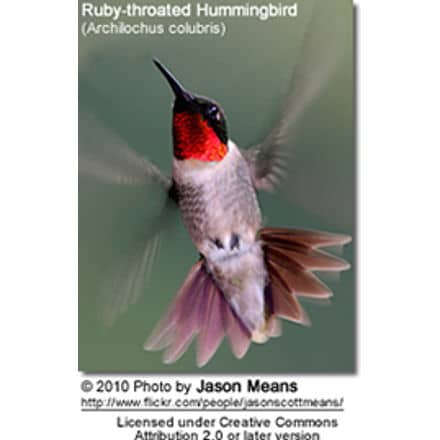
Bumblebee Hummingbirds (Selasphorus heliosa) – Also found in Mexico and rarely in the United States (Arizona)
The upper plumage and sides are mostly green. The plumage below is whitish. The rounded tail is green with a rufous base.
The male can be identified by the violet-red gorget (throat patch).
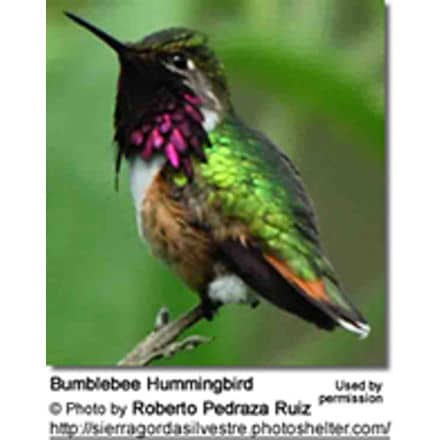
Broad-tailed Hummingbirds (Selasphorus platycercus) – Also found in Western U.S and Mexico.
Males can most easily be identified by their iridescent, rose-red throats, white chest feathers and metallic green back and crown and their rounded tails. The males’ tails make whistling noises in flight.
Females lack the flashy throat patch of the male and are mostly pale below. Their white-tipped outer tail feathers are rust-colored close to the body and blackish in the center; the tail feathers in the center range from green to blackish.
